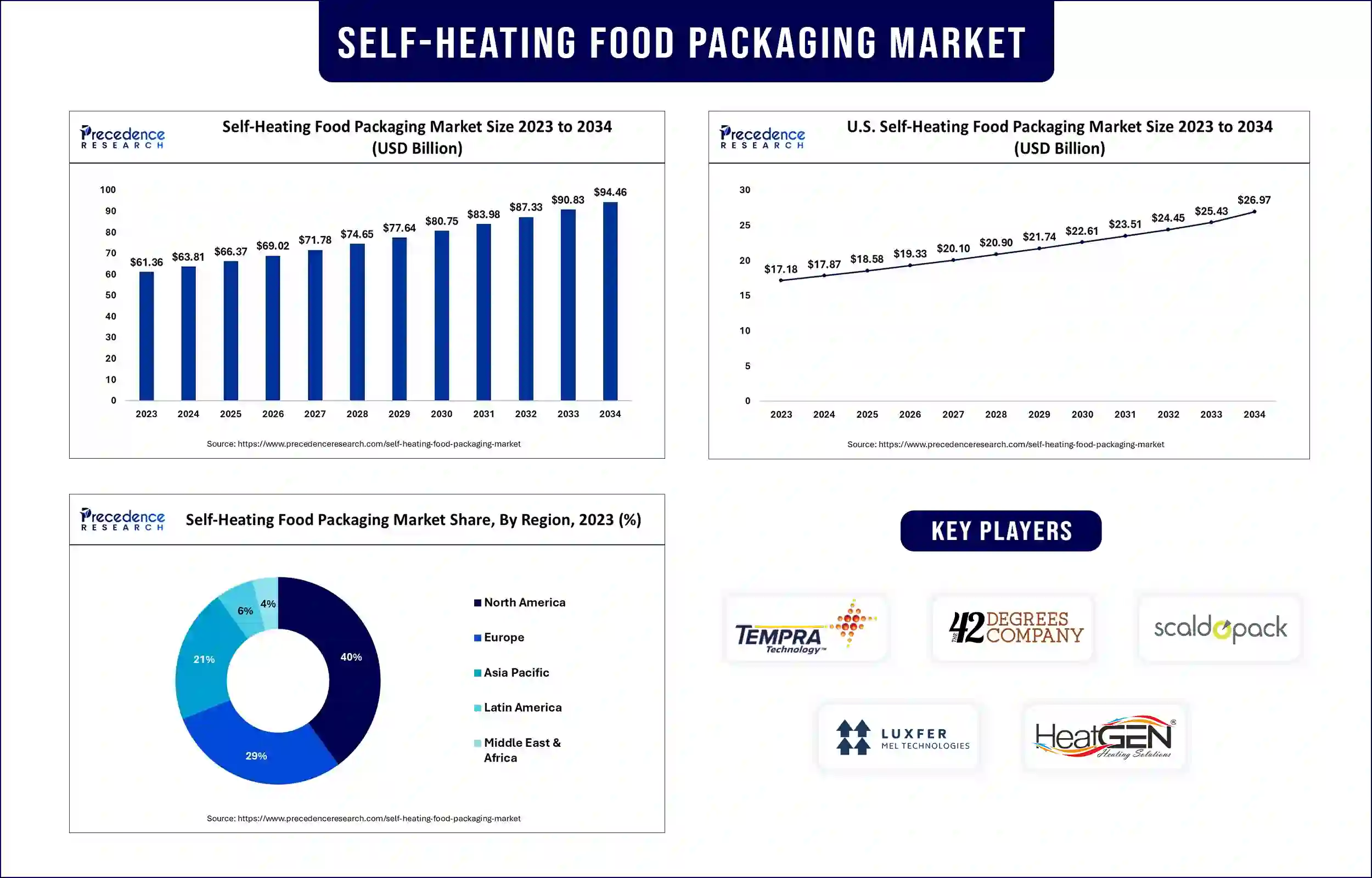November 2025
The global self-heating food packaging market revenue was valued at USD 63.81 billion in 2024 and is expected to attain around USD 90.83 billion by 2033, growing at a CAGR of 4% during forecast period. The demand for self-heating food packaging is rising with the growing consumption of packaged and ready-to-eat foods.

Self-heating food packaging is characterized as having the capacity to heat food without needing external electricity or heat. It is a container for storing and transporting food, often made out of an inner polymer film or microwaveable pouch that generates the heat required to cook the food without additional energy.
Self-heating food packaging is sometimes referred to as a composite composed of polymers with phase change characteristics combined with other additives like waxes, oils, water repellents, etc. It provides improved thermal insulation at a lower cost than conventional techniques like vacuum sealing. Self-heating food packaging aids in preserving the freshness and flavor of food.
When traditional cooking is not possible, such as during military operations and natural catastrophes, this package cooks food using an exothermic chemical reaction and water. It is incredibly helpful in daily life since it allows one to have hot meals wherever they are without using a microwave to reheat the packaged food. Self-heating food packaging is a type of active packaging with the capacity and functionality to heat food contents without requiring an external power source.
As customer demand for ready-to-eat, easy foods with a longer shelf life has increased, the food and beverage sector has updated its packaging methods. The need for creative food and beverage packaging is being fuelled by the fast-paced way of life that urban dwellers have worldwide. It has evolved into a cutting-edge method enabling producers and suppliers in the hospitality sector, including hotels, restaurants, and cafeterias, to provide pre-cooked meals without microwave.
Due to the rapidly changing lifestyle and technological advancements in the food packaging sector, the self-heating food packaging film market in North America was predicted to be a sizeable proportion in 2020. According to estimates, the region's demand for self-heating packaging solutions will increase, particularly as newer goods become more widely available and market-related rules start to take shape.
Due to a growing need for instantly heated food and beverage products, a booming food & beverage sector, and a growth in the demand for nutritious and nutrient-dense on-the-go food items in this region, Europe now dominates the self-heating food packaging market. Due to an increase in the adoption of convenient meals among customers and an increase in the population's disposable income, Asia Pacific is expected to witness significant growth in the market for self-heating food packaging.
| Report Attribute | Key Statistics |
| Market Revenue in 2024 | USD 63.81 Billion |
| Market Revenue by 2033 | USD 90.83 Billion |
| CAGR | 4% from 2024 to 2033 |
| Quantitative Units | Revenue in USD million/billion, Volume in units |
| Largest Market | North America |
| Base Year | 2023 |
| Regions Covered | North America, Europe, Asia-Pacific, Latin America, and Middle East & Africa |
Market Segmentation:
By Packaging Type
By End Users
By Application
By Distribution Channel
Get this report to explore global market size, share, CAGR and trends, featuring detailed segmental analysis and an insightful competitive landscape overview@ https://www.precedenceresearch.com/checkout/2092
You can place an order or ask any questions, please feel free to contact at sales@precedenceresearch.com | +1 804 441 9344
November 2025
October 2025
July 2025
July 2025